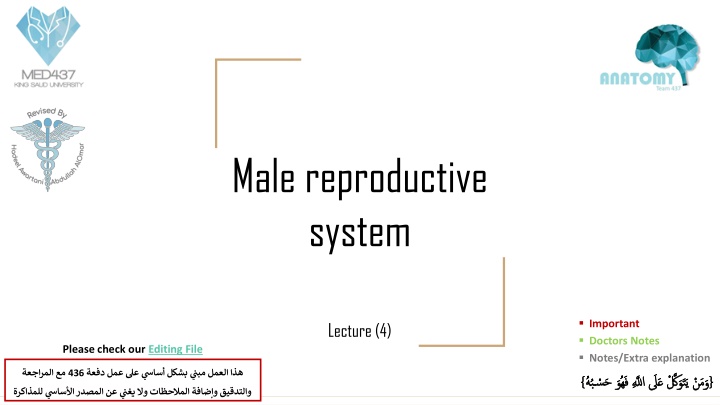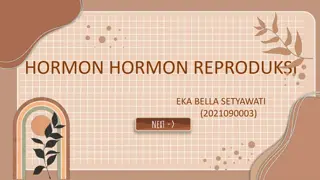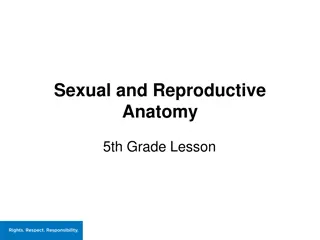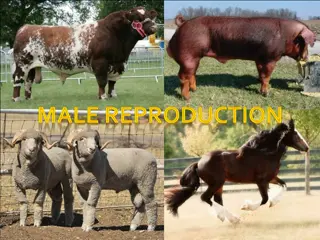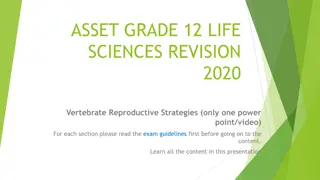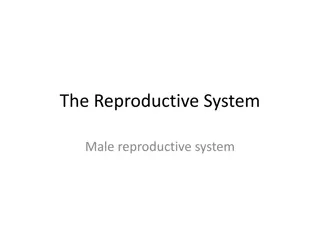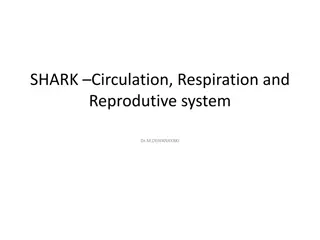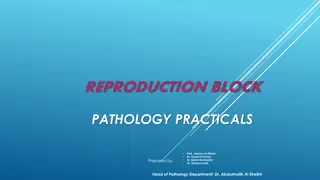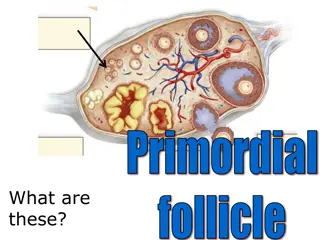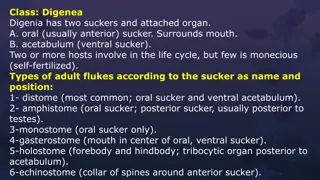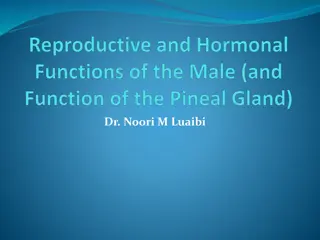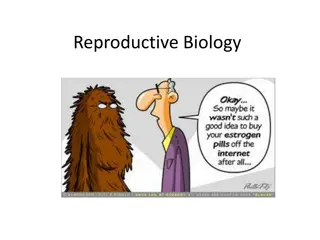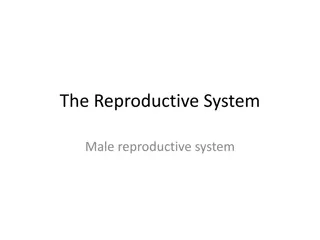Male Reproductive System Overview: Anatomy, Function, and Components
This lecture focuses on the male reproductive system, covering the primary and accessory sex organs, external genitalia, and their functions. Students will learn about the testes, epididymis, vas deferens, seminal vesicles, prostate gland, and more. Details on testicular descent, scrotum anatomy, and hormonal production are also provided. Essential concepts like spermatic cord contents and factors influencing testicular descent are discussed.
Download Presentation

Please find below an Image/Link to download the presentation.
The content on the website is provided AS IS for your information and personal use only. It may not be sold, licensed, or shared on other websites without obtaining consent from the author.If you encounter any issues during the download, it is possible that the publisher has removed the file from their server.
You are allowed to download the files provided on this website for personal or commercial use, subject to the condition that they are used lawfully. All files are the property of their respective owners.
The content on the website is provided AS IS for your information and personal use only. It may not be sold, licensed, or shared on other websites without obtaining consent from the author.
E N D
Presentation Transcript
Male reproductive system Important Doctors Notes Notes/Extra explanation Lecture (4) Please check our Editing File 436 { { } }
Objectives At the end of the lecture, students should be able to: List the different components of the male reproductive system. Describe the anatomy of the primary and the secondary sex organs regarding: (location, function, structure, blood supply & lymphatic drainage). Describe the anatomy of the male external genital organs Image result for youtube Image result for youtube Image result for youtube Great videos by AnatomyZone that give overview of the lecture 03:46 03:45 07:10
Components of male reproductive system: Components of male reproductive system: 1. Primary Sex Organ: Testis. 2. Reproductive Tract: Epididymis. Vas Deferens also called Ductus Deferens. Spermatic cord (vas deferens passes through it). Urethra 3. Accessory Sex Glands: Seminal vesicles. Prostate gland. biggest Bulbourethral glands (cowper s glands). 4. External Genitalia: You should know that: - Ejaculation is stimulated by the sympathetic - Erection is stimulated by the parasympathetic branch of the sacral plexus Penis
*Two reasons why the left testis is lower than the right one: - Because veins of left testicle drain into the left renal vein (which is small) and this will lead to engorgement, while veins of the right testicle drain into IVC ( which is big) and this will make the drainage much easier. - Sigmoid colon is located in the left side ( it contains feces) and therefore this disturbs the venous drainage. Scrotum Scrotum o An out pouching of loose skin & superficial fascia. o The left scrotum is slightly lower than the right*. o Function: Houses and protects the testis. Regulatestesticulartemperature (no superficial fat) so the heat loss is fast. It has thin skin with sparse hairs and sweat glands. The Dartosmuscle (regulates temperature of sperms) lies within the superficial fascia and replaces Scarp s fascia of the anterior abdominal wall. Testes Testes o o o o Testis or Testicle (singular), Testes (plural). Pairedalmond-shape gonads that suspended in the scrotum by the spermatic cord. Volume: about 20-25 ml / Length: 4 - 5 cm long / Weigh (10.5 14 g.). Function: exocrine & endocrine Spermatogenesis (primary sex organ). Hormone production: (Androgens testosterone ). Contents of spermatic cord: - Vas deferens - Genital branch of genitofemoral nerve - 3 arteries (testicular artery, cremasteric artery and artery of the vas) - Vein ( pampiniform plexus) - Sympathetic fibers - lymphatics - Cremasteric muscle - vestige of process vaginalis
Factors that allow the testes to descend: - The upper half of the body grows faster than the lower half, which will help with the descending - The growing viscera ( liver, intestine) increases the abdominal pressure and helps with the descending - Fibrous band connecting the skin of the scrotum and the lower pool of the testis ( it shrinks, and the shrinkage pulls the testis downward (gubernaculum) - tunica vaginalis Testes Testes albuginea: 2. Tunica 1. Tunica Covering Vaginalis Peritoneal covering, formed of parietal and visceral layers. It surroundstestis & epididymis. It allowsfree movement of testis within the scrotum. It is a whitish fibrous capsule. -Fibrous septae extend from the capsule, dividing the testis into (200-300) lobules (average 250). -Each lobule contains, (1-3) seminiferous tubules. -Seminiferous tubules: (Each is a 60 cm coiled tubule). -They are the site of spermatogenesis. -They form the bulk of testicular tissue. -In between the seminiferous tubules lies the Interstitial cells of Leydig which secret Testosterone. -Rete testis: A network of tubules. It is the site of merging of the Seminiferous tubules. Internal structure Arterial supply Testicular artery (arises from the abdominal aorta at the level of L3) Pampiniform plexus of veins: About dozen veins which forms a network within the spermatic cord. They become larger as they approached the inguinal canal and converge (join) to form the Testicular vein: Right Vein drains into IVC | Left Vein drains into left renal vein. SUPPLY Venous drainage Lymphatic drainage Testicular Lymphatics: follow arteries and veins of the testis, End in Lumbar (par aortic) nodes. Scrotum, Penis and Prepuce : Terminate in Superficial inguinal nodes.
Epididymis Epididymis It is a single coiled tubule (6 Meters long) Shape Location superior and posterior margins of the testis Head receives efferent ductules from the testis (rete testis) Body (It s posterior with respect to Testis)| Tail is continuous with Vas Deferens Secretes and absorbs the nourishing fluid Recyclesdamagedspermatozoa Storesspermatozoaup to 2 weeks to allow for physiological maturation of sperms Vas Deferens Vas Deferens Parts Functions It is a muscular tube )45 cm long( Shape Carriessperms from the epididymis to the pelvis (ejaculatory duct) Passes through the inguinal canal as one of the contents of the spermatic cord It crosses the lower end of the ureter Its terminal part is dilated to form the Ampulla of the vas deferens on the base of the urinary bladder. It joins the duct of the seminal vesicle to form ejaculatoryduct which opens into the prostatic urethra. ( the posterior aspect) Function Course
Ejaculatory Duct Ejaculatory Duct o Formed by the union of the lower end of the vas deferens and the duct of the seminalvesicle. o Its length is about 2.5cm. o The 2 ejaculatory ducts open into the prostatic urethra on both sides of the seminal colliculus. o They drain the seminal fluid into the prostatic urethra. Remember: parts of male urethra Prostatic 3cm Membranous 1cm Penile (spongy) 16cm Accessory Glands Accessory Glands o o Seminal vesicle | Bulbourethral or Cooper s glands | Prostate Function: Secretion of the seminal fluid. Nourishing, activation & Protection of the sperms. Seminal Vesicles Bulbourethral or Cooper s glands Small paired glands Shape Paired elongated glands (SV). posterior & inferior to the urinary bladder Lies lateral to the vas deference At the base of the penis Location Secretealkaline mucus for Neutralization of urinary acids & Lubrication Functions Secrete (60% of seminal fluid)
Accessory Glands Accessory Glands Prostate Gland The Largestmale accessory gland, fibromuscular glandular tissue & walnut ( ) size Definition Base (superior): Attached to neck of urinary bladder Shape CONICAL Apex (Inferior): rests on the Urogenital diaphragm Surfaces Anterior, posterior and 2 lateral (right & left) Location Located at the neck of bladder Houses prostatic urethra oIt secretes (20-30% of seminal fluid) remember Seminal Vesicles Secrete (60% of seminal fluid) oIt secretesenzymes(acid phosphatase) which has the following functions: Aid in activating sperm motility Mucus degradation Antibiotic Neutralize the acidity of urine & female reproductive tract (Alkaline fluid) oInternally it has a dense fibrous capsule (prostatic capsule) oExternally surrounded by a fibrous prostatic sheath oThe later (sheath) is continuous with the puboprostatic part of the levator ani muscle, (levator prostate). oIn between the prostatic capsule and the prostatic facial sheath lies the prostatic venous plexus (goes to internal vertebral venous plexus, cancers of prostate may metastasize to vertebrae, spinal cord and brain) Functions Capsule
Accessory Glands Accessory Glands Prostate Gland Anterior Symphysis pubis Posterior Rectum (important for per rectal examination) Superior Neck of the bladder Inferior Urogenital diaphragm Lateral Medial margins of levator ani muscles (levator prostate) Anterior lobe without secretion(isthmus) Lies anterior to the urethra (fibromuscular) Posterior lobe Posterior to the urethra and inferior to the ejaculatory ducts Lateral lobes (2) On each side of the urethra Middle (median) Between the urethra and ejaculatory ducts & closely related to neck of urinary bladder. Usually it projects into lumen of the bladder it elevates fold of mucous membrane (uvulae vesicae) distorting the internal urethral sphincter, after the age of 40 years. *The median & the 2 lateral lobes are rich in glandular tissue. Relations Lobes (related to urethra) They divide the prostate into Peripheral and Central (Internal) zones. The Central zone is represented by the Middle lobe. Within each lobe are four lobules, which are defined by the ducts and connective tissue Urologists & Sonographers
Accessory Glands Accessory Glands Prostate Gland Arterial supply Inferior vesical artery from Internal Iliac Artery Lies between the prostatic fibrouscapsule and the prostatic sheath. It drains into the internal iliac veins. It is continuous superiorly with the vesical venous plexus (VVS) of the urinary bladder and posteriorly to the internal vertebral venous plexus (IVVP). SUPPLY Venous plexus Lymphatic drainage Internal iliac lymph nodes Urethral crest longitudinal elevated ridge Groove on each side of the crest The prostatic gland opens intothe prostatic sinus A depression on the summit of the urethral crest The ejaculatory ducts open on the sides of the utricle Seminal colliculus: rounded eminence that opens into the prostatic utricle Prostatic Urethra* Prostatic sinus (Urethral sinus) Prostatic utricle *Structures seen on the posterior wall of the prostatic urethra
Penis Penis Has (3) cylindrical masses of erectile tissue Two Corpora Cavernosa One Corpus spongiosum Copulatory Excretory Penile urethra transmits urine & seminalfluid Two superior (right & left) masses of (Primary erectile tissue) They Provide the majority of rigidity & length of penis Their posterior expansions, forms the 2 Crurae (anchor tissue) against pelvic bone The single inferior mass (Secondary erectile tissue) It is traversed by the penile urethra Its Anterior expansion forms the Glans penis Its posterior expansion forms the bulb of the penis Corpora cavernosua Erectile tissue Corpus spongiosum Prepuce or foreskin: Fold of skin covering glans penis (before circumcision= ) o
Cremasteric reflex Cremasteric reflex Indication Evaluation of testicular pain in case of (Testicular Torsion). Examiner strokes OR pinches the skin in the upper medial thigh. It causes contraction of the cremasteric muscle Technique Observation Rise of the Testicle on same side (normal) NORMAL: It is present with Epididymitis. Interpretation ABSENT: (no Testicle rise), Is Suggestive of TESTICULAR TORSION. (Also ABSENT in 50% of boys under age 30 months) Test Sensitivity for Testicular Torsion: 99% Assumes age over 30 months Efficacy Genitofemoral (GFN), ( L 1, 2) Nerve involved Sensory: Femoral branch of (GFN) & Ilioinguinal Motor: Genital branch of (GFN). *Do not use this test under age of 30 months (as the muscle has not fully developed yet).
Hypertrophy of the Prostate Hypertrophy of the Prostate Benign Malignant (prostatic carcinoma) Age Common after middle age common after the age of 55 Lymphatic spread: metastasize first to internal iliac & sacral lymph nodes Venous spread: Later to distant nodes , bone & brain through (IVVP) Metastasis Does not metastasize Relation to urethra An enlargedprostate projects into the urinary bladder and distorts the prostaticurethra It can cause obstruction to urine flow because of its close relationship to the prostatic urethra The middle lobeoftenenlarges and obstructs the internal urethral orifice, this leads to Nocturia, Dysuria, Frequency and Urgency The malignantprostate is felthard & irregular in Per- rectal examination (PR) Notes
MCQs 1. The lymphatic drainage of the scrotum is? A- Superficial inguinal nodes B- Deep inguinal nodes C- Paraaortic nodes D- Testicular nodes 5. Which of the following related anteriorly to the prostate gland? A- Neck of the bladder B- Symphysis pubis (sp). C- Urogenital diaphragm D- Rectum 2. What is the male primary sex organ? A- Vas deference B- Penis C- Testes D- Prostate 6. The ejaculatory duct drained into which of the following? A- Prostatic utricle B- Prostatic cleft C- Prostatic sinus D- Urethral cleft 3. ________ Of the epididymis receives efferent ductules from the testis? A- Head C- Tail 7. Testicular artery arises from? A- Ascending aorta B- Arch of aorta C- Abdominal aorta at the level of l3 D- Abdominal aorta at the level of l5 B- Body D- Vas deferens 4. Which of the following lies lateral to the vas deferens? A- Cowper's glands B- Prostate C- Seminal vesicle D- Rectum 8. Cremasteric reflex is used to diagnose? A- Testicular torsion B- Seminoma C- Prostatitis D- Benign prostatic hyperplasia 8. A 7. C 6. A 5. B 4. C 3. A 2. C 1. A
Good luck Special thank for team436 Team Leaders: Faisal Fahad Alsaif Rawan Mohammad Alharbi Team Members: Abdulaziz Aldukhayel Abdulrahman Alduhayyim Rinad Alghoraiby References: 1.Girls & Boys Slides 2.Greys Anatomy for Students 3.TeachMeAnatomy.com Twitter.com/Anatomy437 Anatomyteam.437@gmail.com
